Plain Chachalaca, Ortalis vetula, Chachalaca Oriental (Spanish), Baach (Mayan)
In the Yucatan Peninsula thickets, scrubland, dense second growth or forest edge, listen closely to the rowdy, raucous calls of two secretive inhabitants especially at sunrise and sunset:
http://www.xeno-canto.org/227000 (click on the arrow to start the recording)
The loudest call, emitted by a male, is also lower than the call of the female in this duet. Between the male’s skin and chest muscle a loop of windpipe (trachea) runs from the neck to the belly and back up toward the neck before it enters the thorax in the body. It’s wider and twice as long as the female trachea. However, in Mexico ladies who chatter may be called “chachalacas”. Perhaps men should be referred that way instead of women.
Calls are easily heard during the breeding season but they may occur throughout the year and incite other chachalacas to respond:
http://www.xeno-canto.org/147480
The saying, “The squeaky wheel gets the grease” implies a person who complains the most or speaks up loudly gets the attention. Unfortunately few studies exist on the life history of this secretive bird in the wild. When most birdwatchers hear this species, they want to get away from the deafening chorus. Reverse psychology?
On the other hand, isn’t “chachalaca” a great name that supposedly sounds like the bird’s call? I don’t know how scientists interpret bird calls into words, but I beg to differ. It seems more like the name of a fabulous dance.
How appropriate as the shy Plain Chachalaca lives in small flocks mainly in trees and “dances” through them by bounding through the trees, running on branches, or swooping in quick flights from perch to perch. It seems to enjoy dust baths on the ground and will become tolerant to people in parks who unfortunately feed them popcorn and other junk food. Primarily vegetarian, this species dines on leaves, flowers, twigs, nuts and especially fleshy fruits. It feeds on insects and snails when feeding its young.
Although this two foot long species reminds me of a small turkey, and is sometimes called a Mexican Pheasant, it’s not classified in the family of turkeys and pheasants, but in the family of guans and curassows. However, both families belong to a larger group, the Order Galliformes.
The Plain Chachalaca ranges from southern Texas to Costa Rica and is hunted for its meat.
I felt lucky for suchalucky shot of the chachalacas on the ground. Since males and females look similar in their olive brown plumage with red skin on their throats, perhaps they were a pair. That redness intensifies during breeding season. I inferred one was trying to lure the other into the bushes to begin their duet to do it.
IF YOU LISTEN, NATURE CALLS TO YOU TO COME PLAY OUTDOORS.
DISCLAIMER: References do not agree on details about this species. Barbara MacKinnon de Montes email correspondence, Sal a Pajarear Yucatan Guia de Aves, A Guide to the Birds of Mexico and Northern Central America, Birds and Reserves of the Yucatan Peninsula, 100 Common Birds of the Yucatan Peninsula, Sibley Guide to Bird Life and Behavior, Lives of North American Birds, A Birdwatcher’s Adventures in Tropical America, http://bna.birds.cornell.edu/bna/species/550/articles/, http://www.xeno-canto.org/https://www.allaboutbirds.org/guide/Plain_Chachalaca/lifehistory
Cherie Pittillo, “nature inspired,” photographer and author, explores nature everywhere she goes. She’s identified 56 bird species in her Merida, Yucatan backyard view. Her column, published on the 7th and 21st of each month, features anecdotes about birding in Merida, Yucatan and beyond. Contact: [email protected] All rights reserved, ©Cherie Pittillo

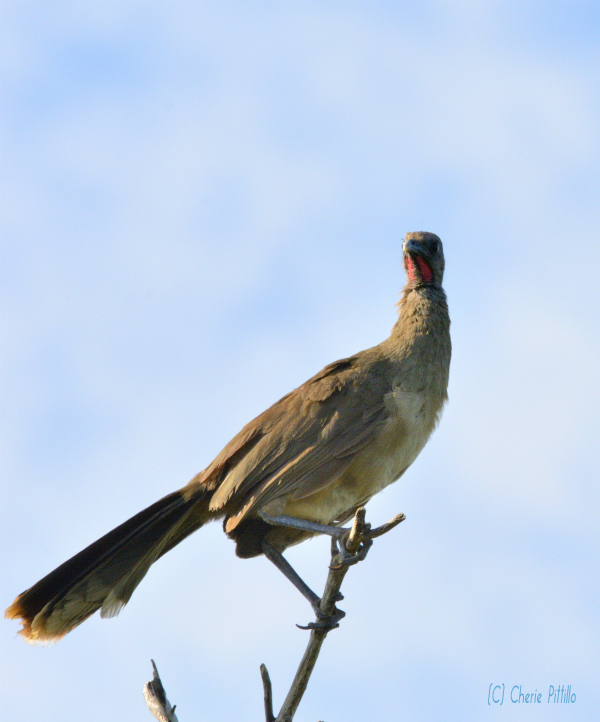
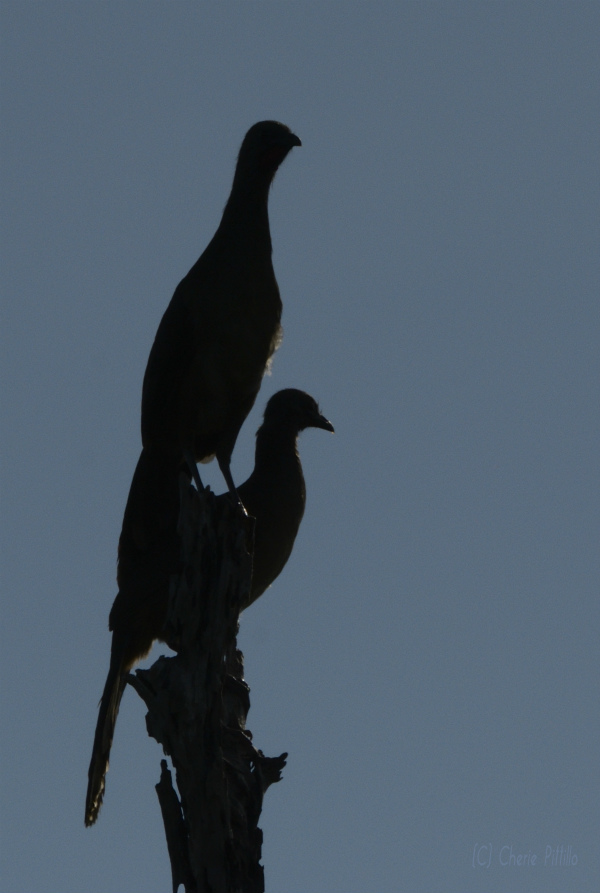
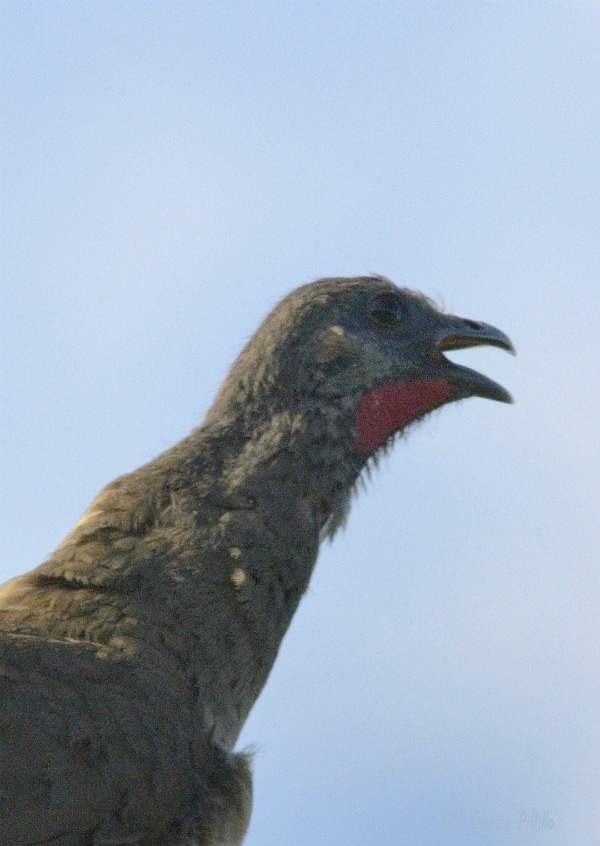
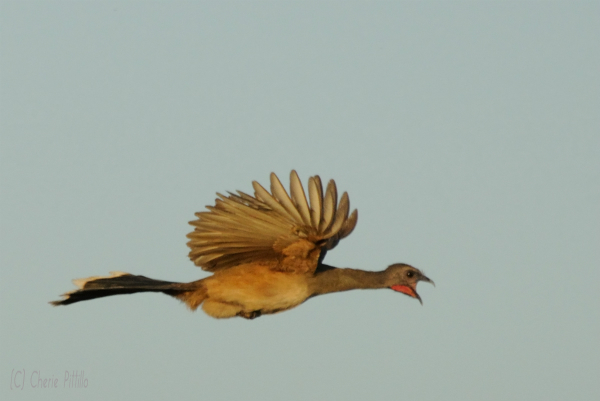
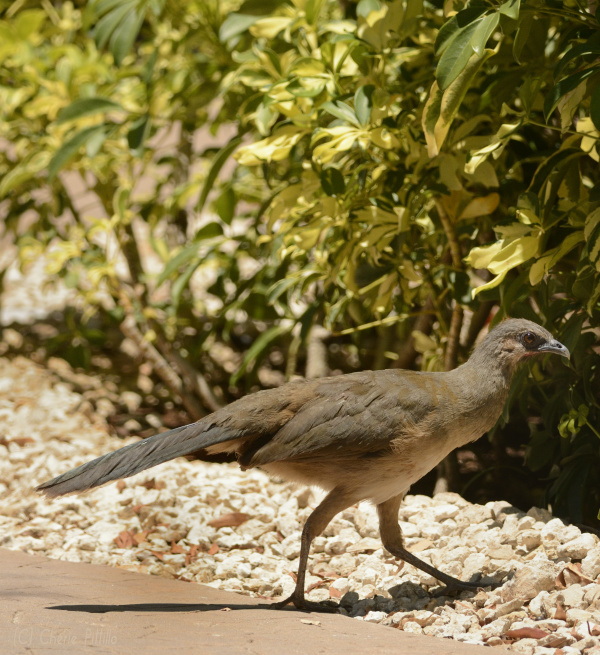
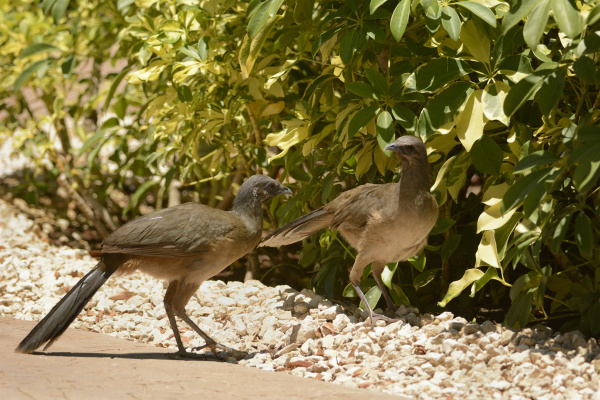
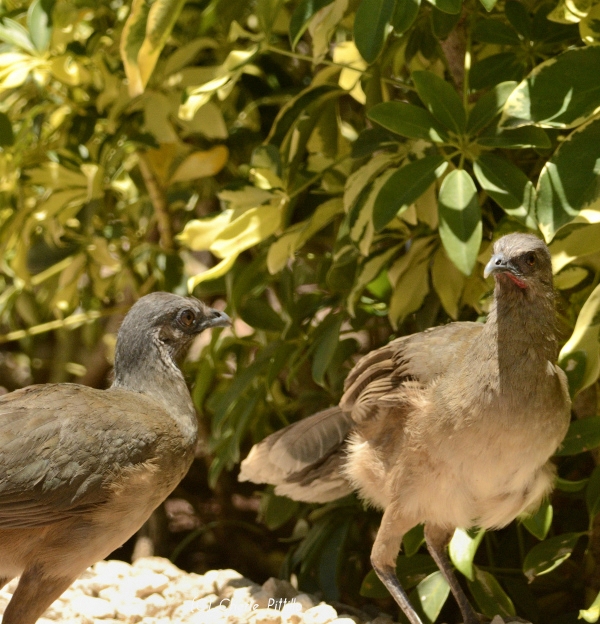
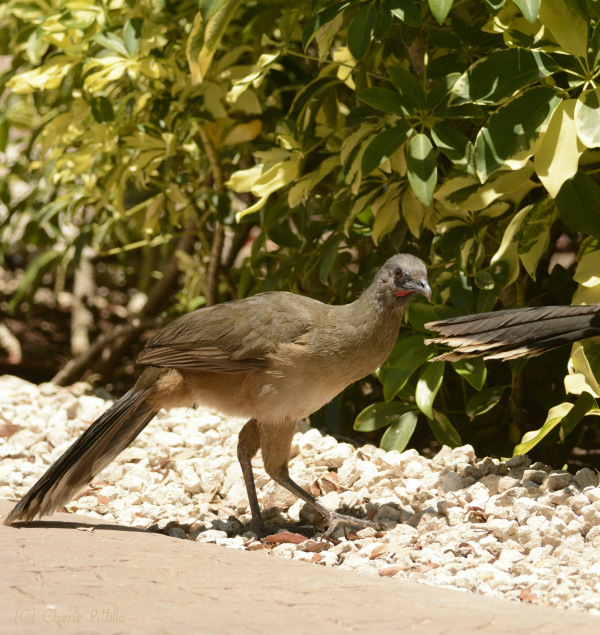

1 comment
Cherie – I continue to learn from you as well – “The squeaky wheel gets the grease”! Never heard that one in New York!! Great job!
saludos,
Barbara
Comments are closed.